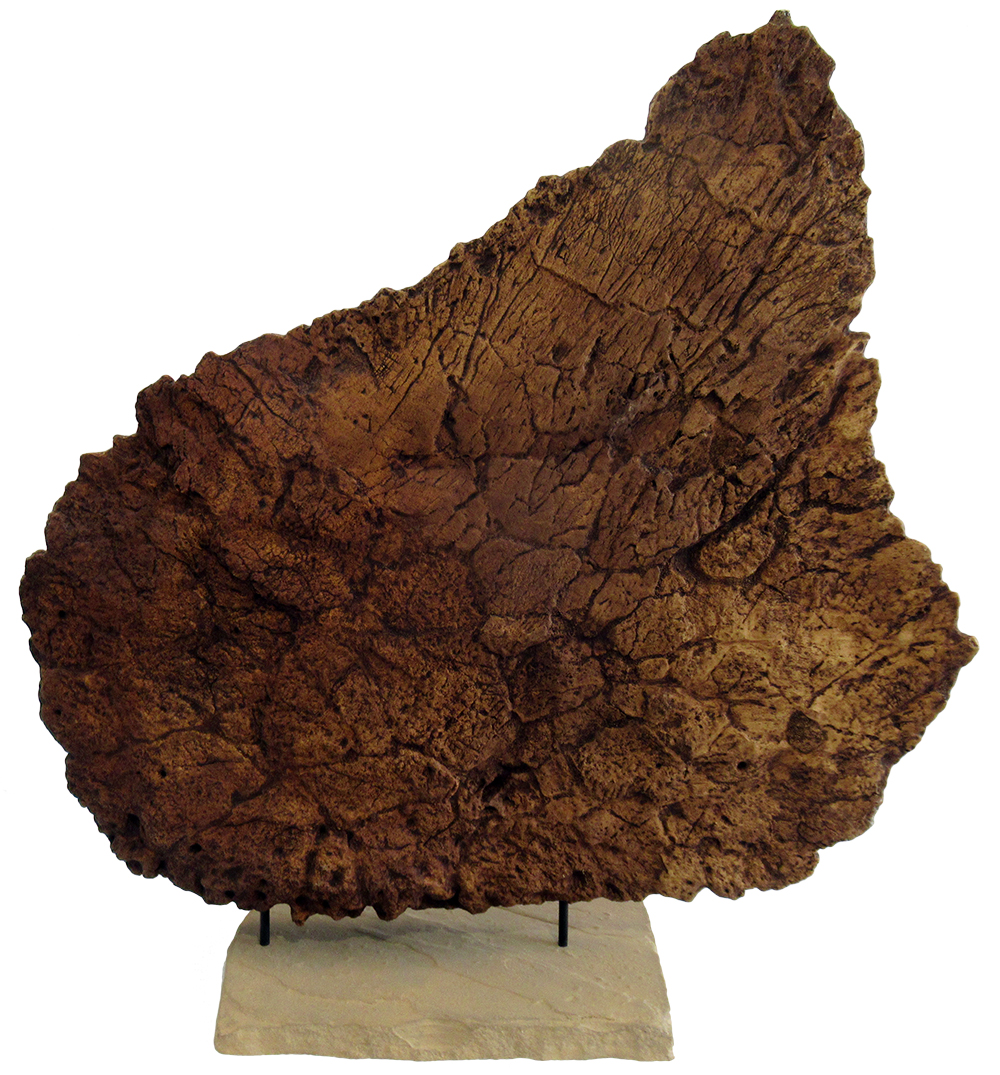
Morrison Formation, Colorado (Late Jurassic - 149 MYA)
With a double row of plates running down its back and a spiked tail thagomizer, Stegosaurus is one of the best-known and most easily recognized dinosaurs. Despite its fame though, there are still many things we do not know about it, including all the roles its plates played in life.
Originally discovered by Arthur Lakes, an instructor at what later became the Colorado School of Mines, Stegosaurus was named and described by Othniel Marsh in 1877 in the midst of his famous ‘Bone Wars’ competition with Edward Cope. Stegosaurus is Greek for ‘roofed lizard’ and Marsh chose the name because he initially believed that the animal’s dorsal plates lay flat on its back and overlapped one another much like shingles on a roof. Even then, Marsh was well ahead of others who proposed the plates extended out horizontally from the animal’s back and allowed their owner to leap off cliffs and glide down thermal air currents as the equivalent of a four-to-seven-ton flying squirrel.
Eventually, Marsh and others realized the plate were near vertical and arrayed in two rows running down the animal’s back. Surprisingly, these rows were not paired nor symmetrical, and the plates’ asymmetry is highly unusual compared to most animal skeletal designs. Instead, each of the large dorsal plates in a Stegosaurus was shaped differently than the others. In life, the plates were covered by keratin sheaths, so the plates in living forms would have been larger than their bony cores.
Marsh and other early paleontologists originally assumed Stegosaurus used its plates to defend itself from predators, much like its spiked tail undoubtedly did. Yet, the plates seem a limited form of defense as they left most of the animal’s sides unprotected. Others, assuming all dinosaurs were cold-blooded ectotherms, proposed the plates acted as a solar screen to warm the animal up. More recently, the recognition that Stegosaurus, like other dinosaurs, was far closer to endothermic than ectothermic led to the counter proposal that the plates served a thermoregulatory role but as a way to shed excess body heat to avoid overheating (a common threat to large endothermic animals). The grooves seen in the surface of the bony plate, especially across its upper region, in life held blood vessels that may have carried heat to the plates and the plates’ shapes are well suited for heat dissipation. However, thermoregulation alone could not explain the variety of shapes seen in stegosaur lines. Plate sizes and shapes differed between species and within species differed by age and sex, strongly suggesting the plates played some role in social display. Display may have been even more effective if the keratin coverings were brightly colored, something we may not ever know.